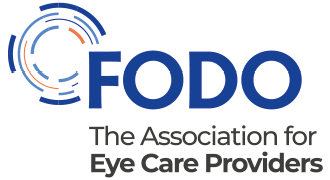Updates
Background
Providing a safe and comfortable environment is paramount for both patients and staff. This Model Chaperone Framework explains the role and effective use of chaperones in primary and community eye care settings. This model policy is designed to be adapted for use in your practice.
Framework
Sight tests and other procedures carried out by optometrists and opticians in primary and community-based settings are non-invasive and not intimate in nature [1]. This framework has been written to address these particular circumstances and relates to chaperoning, not the separate issues regarding child abuse [2].
Guidance for optometrists and opticians
Particular attention should be drawn to the following extract from the College of Optometrist guidance for professional practice:
- You should take steps to protect yourself against unfounded allegations of inappropriate conduct or assault. These may result from children becoming distressed or uncomfortable at the close physical proximity and contact that is necessary during an eye examination. As well as the guidance on communicating with children, you should consider these aspects of your consulting room:
- an open access policy which means colleagues are able to knock and enter the room at any time without having to wait to be invited in after knocking
- having windows into the consulting room or keeping the door ajar when there is no accompanying adult
- the design and decoration so that it is not intimidating to children, and
- arranging the furniture and equipment so you are not positioned between the child and the door [3].
If you publish your policy based on this guidance the most up-to-date version of the relevant sections of the College of Optometrists guidance and the relevant sections of the Association of British Dispensing Opticians guidance should be appended.
You should also be familiar with the Optical Confederation safeguarding guidance and understand the definition of a Gillick-competent child.
The law regards young people aged 16 or 17 to be adults for the purposes of consent to treatment and right to confidentiality. Therefore, if a 16-year-old wishes a medical practitioner to keep the treatment confidential then that wish should be respected.
Children under the age of 16 who have the capacity and understanding to take decisions about their own treatment are also entitled to decide whether personal information may be passed on and generally to have their confidence respected, for example if they were receiving counselling or treatment about something they did not wish their parent to know.
Case law has established that such a child is known as 'Gillick Competent'- i.e. consent or refusal should be respected where a child is under 16 but has sufficient understanding about the proposed treatment to give or withhold consent.
However, good practice dictates that the child should be encouraged to involve parents or other legal guardians in any treatment.
When examining a child or vulnerable adult, a practitioner should normally allow any request for a parent or carer to accompany the patient in the consulting room. However, the practitioner should not allow such a request where it is contrary to the declared wishes of an adult patient or of a Gillick- competent child.
Consent and request issues
When the patient requests that the practitioner does not carry out any procedure, it may mean that a sight test cannot be completed. The requirements of the patient takes precedence, but if the practitioner judges that the sight test has not been completed, then the patient should be informed and the circumstances should be noted on the record card.
Model documents
Updates
Originally published: August 2005
Reviewed: January 2020
Next review date: August 2022
Info: This was published by FODO, ABDO and the AOP in 2005 with minor amends in 2012 as the Optical Confederation (OC). It was converted into an online resource as part of changes to the OC website in January 2020. The guidance was simplified, references to College guidance updated, consent section updated to refer to new guidance (from the GOC, GMC and FODO) and model policy and notification separated and attached to aid members in downloading documents and competing their details.
References and notes
[1] Note, the NHS framework relates closely to hospitals and NHS establishments where intimate examinations are being carried out
[2] This framework is adapted from the: 'Guidance on the Role and Effective Use of Chaperones in Primary and Community Care Settings' Model Chaperone Framework, published by the NHS Clinical Governance Support Team in June 2004
[3] This now references to College of Optometrists, Guidance for Professional Practice content, A78, https://guidance.college-optometrists.org/guidance-contents/knowledge-skills-and-performance-domain/examining-younger-children/#open:71 accessed 31 January 2020.
The previous version of this guidance referred to Section 26.05 of the 1 November 2014 to 20 November 2017 College of Optometrists guidance. The 2014 Model Chaperone guidance therefore stated:
"The practitioner should be aware of the need to protect him/herself against unfounded allegations of inappropriate conduct or assault that may result from the distress or discomfort of a patient at the close physical proximity and contact that is necessary in the conduct of a consultation. The unfamiliar environment of the consulting room may exacerbate feelings of distress or discomfort on the part of a child or vulnerable adult. The steps taken by an individual practitioner to overcome this will depend upon his/her own circumstances and must always take account of the need to preserve patient confidentiality. They may include:
- Ensuring the presence of a parent or other appropriate carer at all times, even outside the consulting room [note 03 When examining a child or vulnerable adult, a practitioner should normally allow any request for a parent or carer to accompany the patient in the consulting room. However, the practitioner should not allow such a request where it is contrary to the declared wishes of an adult patient or of a Gillick-competent child.]
- An open-access policy - i.e. a policy which means that colleagues are able to simply knock and enter the consulting room at any time without having to wait to be invited in after knocking
- Having windows in the consulting room, or keeping the door ajar to enable the parent or carer to hear the consultation if he is not in the consulting room; When a practice or corporate contractor publishes its policy, based on this guidance, the most up to date version of the relevant sections of the College of Optometrists guidance (Sections 1, 19, 24 and 26) and the relevant sections of the Association of British Dispensing Opticians guidance should be appended."
The College updated this guidance in 2017 and A78 is most closely aligned with the original cited 26.05 and therefore included above. References were added to safeguarding and consent guidance published since 2014.

 Patients and public
Patients and public
 Policymakers
Policymakers Members
Members News and views
News and views
